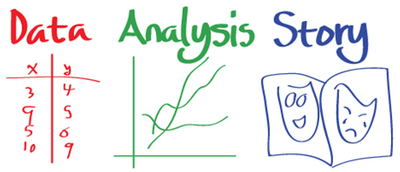Once your improvement plan is in place, the next step is writing a winning proposal. This process involves creating a logical sequence of steps, highlighting your program’s strengths, and explaining your planned improvements. As part of the blog series, each post will contain guidance and include practical tips for each of the seven grant proposal sections, thought-provoking questions, and examples of successful writing.
Section 1: Demonstrating Community Needs
To ensure the success of your HS DRS proposal, it remains crucial to demonstrate community needs and resources in a clear and concise manner. Utilize pie charts and bar graphs to showcase community data and make a strong connection between your proposed services and community needs. This will strengthen the foundation of your grant application.
Section 2: Program Services: Promote School Readiness
In addition, your proposal should provide extensive details about your research-based curriculum, teacher-to-child relationships, and transparent child growth and outcomes. It is vital to address the specific needs and challenges of dual-language learners and connect families to healthcare providers, including dentists and mental health specialists. Family relationships and rapport are vital components of early childhood education, so you need to be sure to include discussions of family needs and outcomes.
Section 3: Past Performance
It is crucial to honestly evaluate past performance, address challenges, and provide potential solutions. This will showcase your willingness to reflect, learn, and improve, which aligns with the goals of the DRS grant.
Section 4: Staffing and Supporting a Strong Workforce
In your proposal, include a comprehensive staff description highlighting education, experience, and competencies. Emphasize the importance of a "living wage" and engagement strategies to retain staff. Offering frequent breaks and high-quality professional development opportunities will attract and keep high-quality educators.
Section 5: Planning and Implementation
When outlining your planning and implementation section, you will provide specific and detailed information about locating and preparing locations (including licensing), hiring timelines, and training schedules. Your proposal should allow enough time to implement improvement strategies while minimizing disruptions in services.
Section 6: Organizational Capacity and Governance
In this section you will highlight your management team’s experience, expertise, and accomplishments. Further, you will describe how your governing body and Policy Council have been effective and will continue to be engaged with additional training and communication. This section should detail your plans for internal monitoring and evaluation of program priorities and management systems.
Section 7: Budget and Budget Justification
Conclude your proposal with a detailed budget that aligns with community needs, goals, and program services. Emphasize how competitive wages, high-quality professional development, and appropriately funded initiatives contribute to a successful DRS application. T







